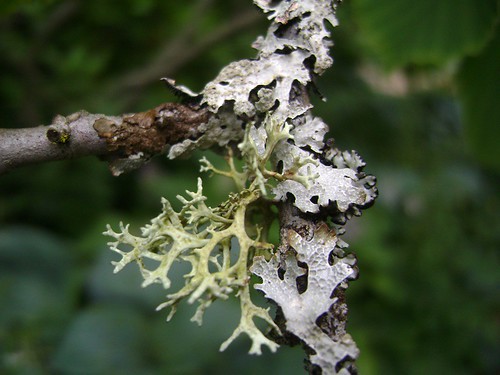Moss
In continuation of the autumn aromas theme... Here comes moss, in all its glory and various forms it comes in. The moss used in perfumery not the true, green moss (as seen in the photo above) - but the gloomy looking lichen that hangs out of trees and usually looks silvery-grey and mushroom green at best (see photo below).
There are several types of the so-called "mosses" used in perfumery, and they vary slightly. The most famous one is oakmoss, which has the richest and most versatile fragrance. Oakmoss has a scent reminiscent of the forest floor in Autumn, which is why Chypres are always considered so suitable fo rthe season. It is somewhat musky at first but develops into a sweeter, almost ambery scent. Oakmoss can also be reminiscent of the seashore and seaweed with a hint of saltiness that is more apparent in the current EU regulated absolute that undergoes a mandatory process to remove the atranol from it.
It is taken from moss that likes the trunks of oak trees and grows primarily in former Yugoslavia. There is brown oakmoss and green oakmoss, and both are quite similar in scent, actually. The brown is perhaps more on the ambery side, and the green one is a bit more salty. Both are equally important because of their essential presence in Chypre, Fougere and literally every fragrance family imaginable benefits from having a little oakmoss thrown in for extra good measure... Not only for its fixative qualities but also for creating an interesting depth even in very low concentrations - in citrus, florals, woodsy types and also in Oriental perfumes.
But Oakmoss is not the only fragrant moss!
There are less known mosses that are used in perfumery, and although they are harder to find, they provide an interesting backdrop to perfumes that need that extra mossy boost, yet with their own special nuance that sets them apart from what could become an inevitable oakmossal cliché...
Cedarmoss has the dryness of cedar, and is more wody and less sweet than oakmoss. It is more salty as well and I love how it works out in l’Ecume des Jours with the seaweed oil – it’s an element that certainly saved this perfume from being a mishmash of expensive florals drowned in a bucketful of lichen.
Another moss that I’m yet to use in perfume is Pine Moss. This is a bit more difficult and actually more dark and also opaque in character, not to mention painfully sticky (or more rock-like, actually). The scent itself is more of a challenge: resinous, sweaty, reminiscent of immortelle absolute. I’ve finally tinctured this monster down recently after having it in the vault, completely ignored, for years and years and years. I think it will make a beautiful autumn perfume with immortelle absolute. It is just waiting for the right moment of inspiration, I guess.



